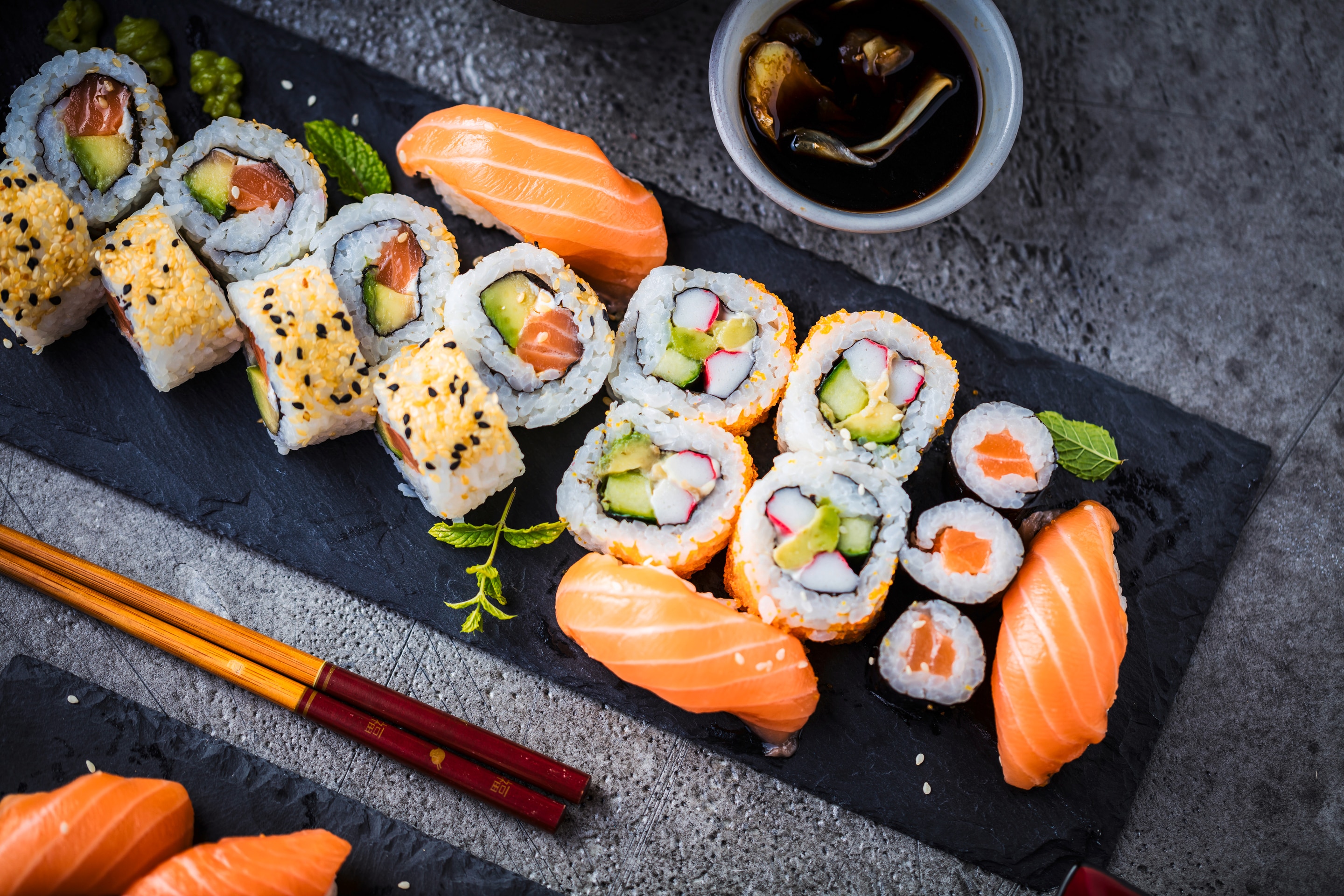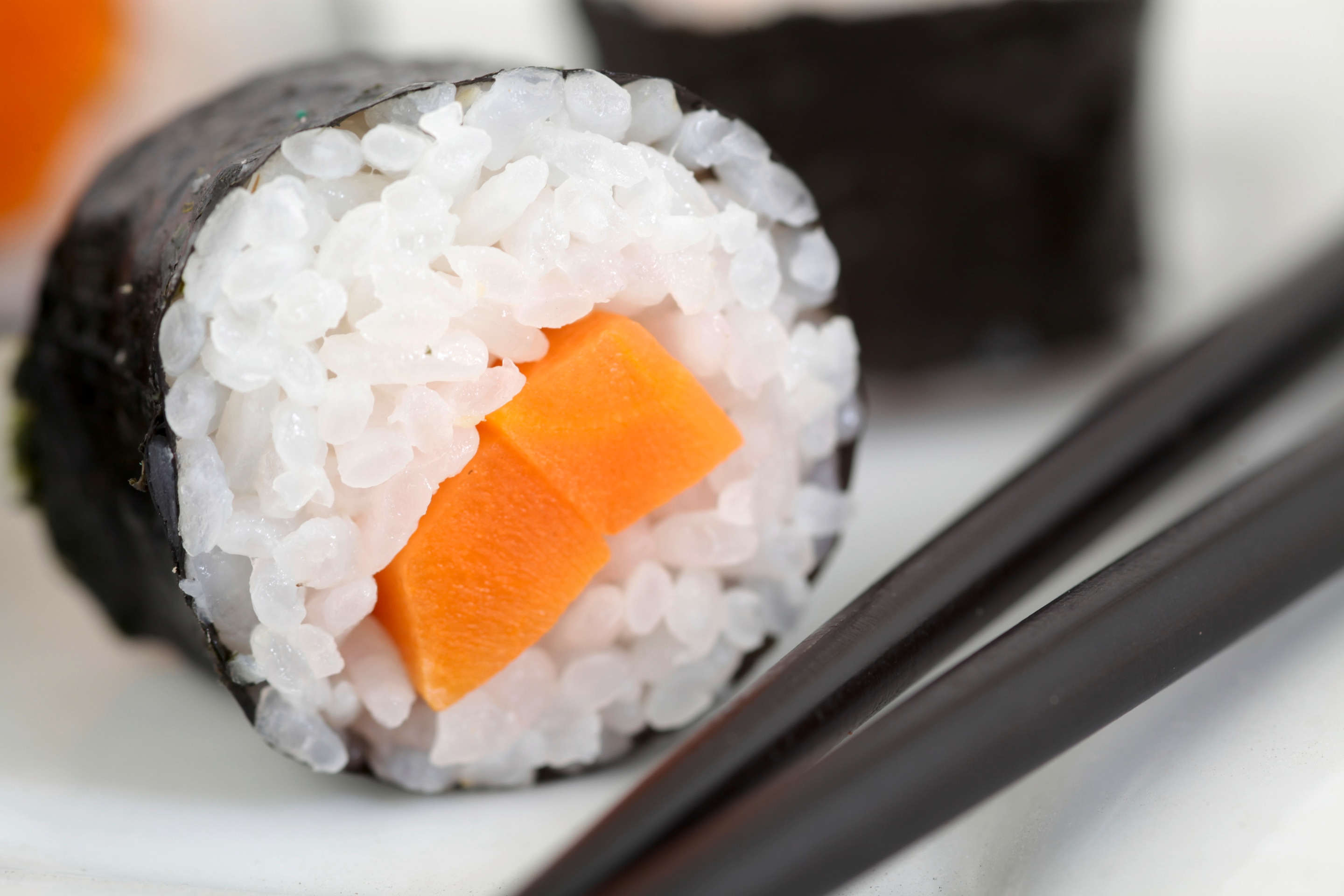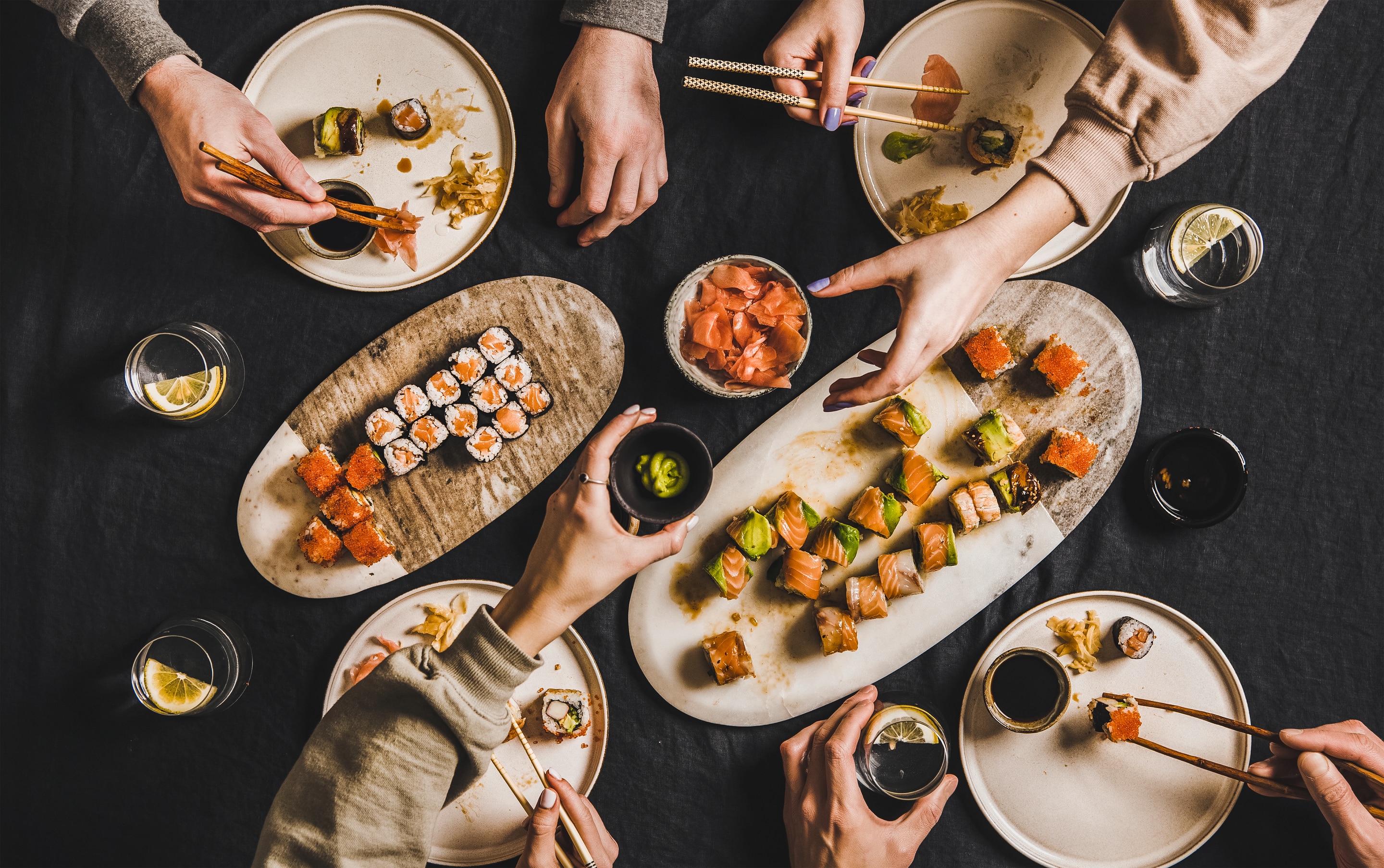Skip to:
Japan’s best import isn’t Hello Kitty, Nintendo, or Toyota. Foodies will unite in saying the recognition goes to the food, specifically Japanese sushi. But don’t let the Pokémon fans hear you say that!
Sushi is a Japanese dish that is generally made up of fish, vinegar, and cooked rice. The most widely known rolls contain raw fish. However, there are also vegetarian sushi options. It can be enjoyed as either appetizer or main course, and there's more than one way to enjoy this raw dish.
At face value, making your sushi roll appears easy. Don't be fooled. It takes a decade or more for the Japanese to consider a person a master in the art of sushi making. Sure, anyone can make rice rolls, but only a true itamae (chef) can create authentic Japanese sushi. If you are toying with the idea of making your own rolls, here are a few basics you need to know first.
Japanese Sushi Making Basics You Need to Know Before Making Your Own

Since the goal isn't to become the next best sushi chef, learning enough of the basics can go a long way towards making your rolls at home. These are some of the commonly asked questions and their answers:
Is sushi safe to eat?
Yes, sushi is safe to eat!
The reluctance to eat sushi stems from the misinformation that sushi is risky to consume. This is mainly because many people think that sushi only refers to raw fish or meat. First-timers can opt for rolls that are devoid of raw ingredients.
Imitation crab is also an excellent choice for those after that umami flavor. When it comes to eating sushi containing raw elements, it is best to dine at top establishments.
Are all sushi rolls raw?
One of the biggest misconceptions is that all sushi is raw, whether or not it contains fish. Not all rolls are raw, and some have cooked crab, shrimp, beef, pork, and eel. The most popular raw ingredients are tuna and salmon.
What are the common ingredients used to make sushi?
As previously mentioned, sushi rolls are made with rice, fish, and vinegar. Other common ingredients include vegetables, crab, eel, tuna, salmon, shrimp, and nori (seaweed). Though there are the most used, there is no limit to the ingredients you can use to make sushi.
Cooked meats like beef strips, bacon, fruits, and cheeses have made their way into these rolls. It helps to select ingredients that are known to taste great together. For instance, avocados and cucumbers pair perfectly. The same goes for cream cheese and some thin slices of ribeye beef seasoned with Knorr Liquid Seasoning. With Knorr you get the rich umami taste to help boost any dish you make.
Do you need to enroll in sushi cooking classes before making your own?
Taking classes is beneficial but not a requirement for making sushi at home. Thankfully, the internet can provide you with many resources, including instructional videos. However, if you want to perfect your techniques, start by joining beginner classes.
Getting Started on Making Japanese Sushi

Japanese sushi is relatively healthy. But because it contains rice, a known source of carbohydrates, it is best to eat it in moderation. Selecting the right sushi ingredients, fillings, and toppings do make a huge difference. Here is a quick guide to help you make simple sushi.
Tools and equipment you will need to make your homemade sushi
- Sushi making can be achieved better when armed with the right tools. Here are the things you will need:
- Rice cooker so that all the rice comes out consistently every time.
- Wooden spoon to fluff up the rice.
- Knives that are sushi-grade. Sharp knives are important for cutting up fish, veggies, and the rolls itself.
- Bamboo mat to form your rolls. Have cling film on hand to prevent the rice from sticking and reduce frequent washing.
- Large wooden mixing bowl
- Colander for washing vegetables and rice
- Cutting board
- Clean dishcloths
Basic Japanese sushi rice recipe
No sushi roll recipe is complete without its key element – the rice. Master sushi chefs in Japan spend a long time perfecting their rice-making techniques. Here is the sushi rice recipe you will need. Pay close attention because this isn’t like your regular sinaing.
Rice ingredients:
- 3 cups sushi rice (short-grain Japanese rice)
- 1 ¼ cups of water
Rice vinegar mixture:
- 3 tbsp sugar
- 1/3 cup rice vinegar
Method
- Wash the rice, then add water to the grains. Cook in a rice cooker.
- Once done, make the vinegar solution by combining ingredients. This mixture is what gives sushi rice its unique flavor. While the rice is still hot, lightly drizzle small amounts of the mixture over the rice.
- Make cutting motions with the wooden spoon across the cooked rice.
- To avoid clumping, DO NOT pour the vinegar mixture all at once.
- You will know when your rice is ready when the grains are slightly cooled, shiny, and a little sticky.
Low-calorie fillings you can use to make healthy sushi
- These days, everyone is trying to watch their diet. For those searching for healthy sushi recipes, here are 5 of the easiest sushi rolls you can recreate without worrying about raw ingredients.
- Avocado sushi: sushi roll filled with avocado slices.
- Kappa maki: also known as cucumber sushi. The roll contains thinly sliced cucumber pieces.
- Kani sushi: looking for an “entry-level” roll that isn’t all about veggies? The kani or crabstick roll is made with imitation crab.
- New York roll: a marriage between two makis, the New York roll has avocados and kani sticks.
- California roll: last but not least is the Cali roll. A triple threat, this type of sushi is made up of kani, avocado, and cucumber pieces. The California roll also includes slices of juicy sweet mangoes in some parts of the world.
But if you are in search of a heftier roll with cooked meats, try its Korean counterpart, the Kimbap.
Making Japanese sushi for the first time can be a bit daunting. While it is true that mastery takes years of practice, if you are only looking to enjoy freshly made sushi rolls at home, then a crash course should yield satisfactory results.
First attempts at making sushi are likely to produce rolls that aren’t as pretty as professionally made ones. But that’s okay. What’s important is that you and your family enjoyed making it. There’s so much more satisfaction in seeing a cooking project come to life. Continue to practice, and eventually, you will have sushi rolls that are both Instagrammable and tasty.

